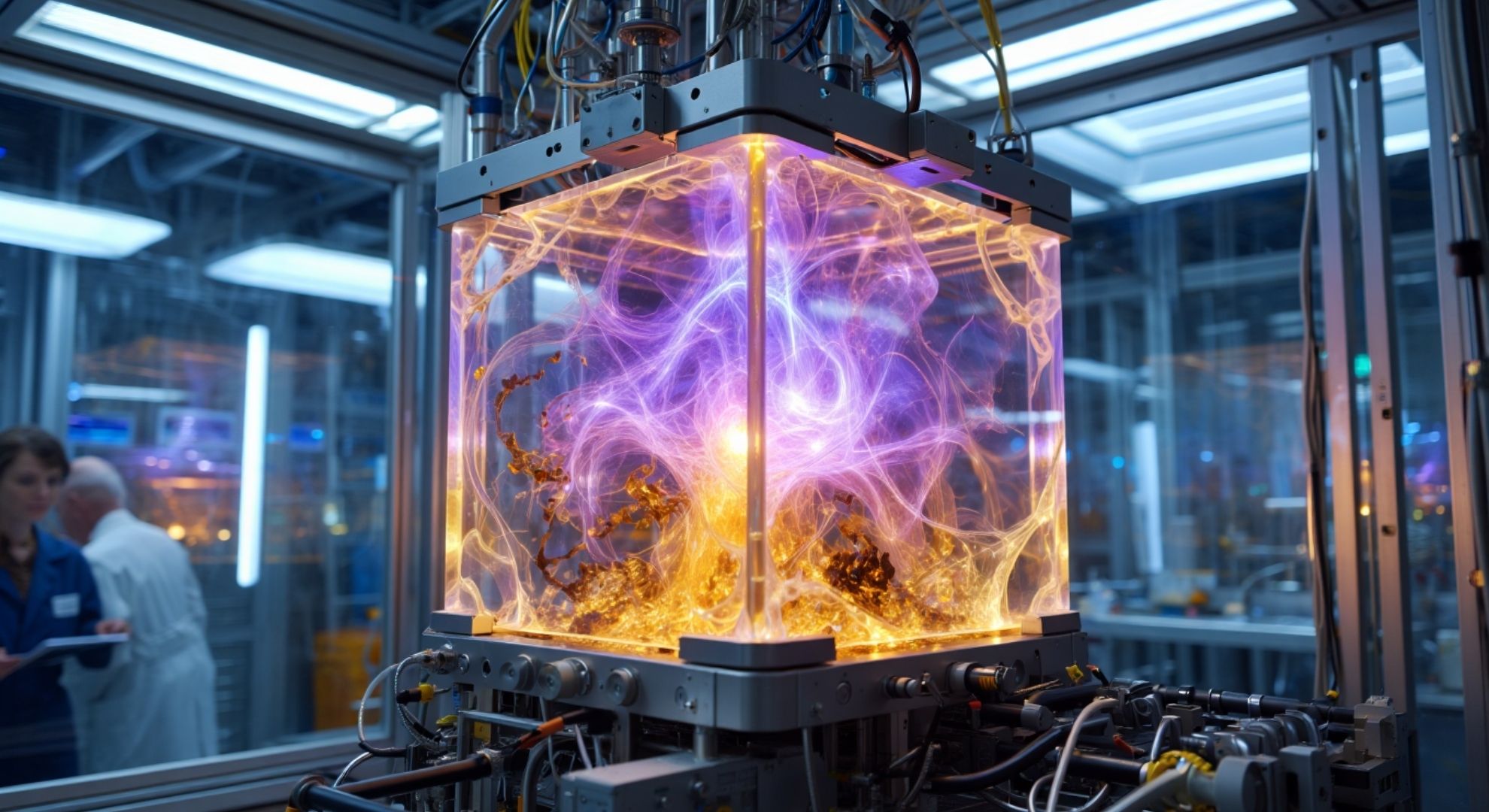A futuristic vision of energy
Imagine a small cube capable of generating enough power to run entire cities, without producing harmful emissions and using a fuel unknown on our planet. This is not science fiction but the bold promise of researchers working on revolutionary energy technologies that could one day replace fossil fuels and even surpass current renewable solutions.
The concept is based on a compact energy generator—a “cube”—that uses a novel fuel source, one not naturally found on Earth. Scientists believe this breakthrough could pave the way for quasi-infinite energy production, transforming how humanity powers its homes, industries, and vehicles.
The mystery of the unknown fuel
At the heart of this invention lies an exotic material engineered in laboratories. Unlike coal, oil, or uranium, this fuel is:
- Extremely dense in energy, capable of producing vast amounts of power with tiny quantities.
- Non-polluting, releasing no harmful greenhouse gases.
- Stable and safe, reducing risks of accidents compared to nuclear fuels.
“We’re working with a fuel source that does not exist naturally on Earth. If fully developed, it could change the global energy landscape forever,” explained one scientist involved in the project.
How the cube works
The generator is designed in the shape of a cube, optimized for efficiency and portability. Its core contains the new fuel, which undergoes a controlled reaction to release energy at unprecedented levels. Unlike combustion engines or traditional nuclear reactors, this cube functions with minimal waste and requires almost no refueling.
Early models suggest that a cube the size of a microwave oven could power a small town for months. Scaling up, entire cities could be supplied with only a handful of these devices.
Comparison with existing energy sources
To grasp the revolutionary potential of this technology, here’s how it compares with today’s main energy sources:
| Energy source | Efficiency | Emissions | Fuel availability | Longevity per unit |
|---|---|---|---|---|
| Coal | Medium | High (CO₂, particulates) | Abundant but polluting | Hours to days |
| Nuclear (uranium) | High | Low (but radioactive waste) | Limited, geopolitically sensitive | Months to years |
| Solar/Wind | Variable | Zero | Renewable but weather-dependent | Continuous with conditions |
| Cube generator | Extremely high | Zero (based on early research) | Laboratory-made, novel fuel | Months to decades |
This table highlights why the cube is attracting so much attention: it combines the emission-free nature of renewables with the efficiency and reliability of nuclear energy—without many of their drawbacks.
Potential benefits for humanity
If fully developed and commercialized, this cube could reshape global society:
- End of energy scarcity: Accessible, nearly limitless power for everyone.
- Environmental protection: Sharp decline in greenhouse gas emissions.
- Economic transformation: Reduced dependency on oil, gas, and rare resources.
- Global equity: Developing countries could access reliable energy without massive infrastructure.
Challenges that remain
Despite the hype, researchers caution that the technology is still at an experimental stage. Key challenges include:
- Scaling laboratory results into mass production.
- Ensuring safety under all conditions.
- Creating supply chains for the synthetic fuel.
- Overcoming political and economic resistance from existing energy industries.
Until these hurdles are addressed, the cube remains a vision of the future rather than a present-day reality.
A glimpse of tomorrow
Even if it takes decades to perfect, the concept of a cube generating nearly infinite energy with an unprecedented fuel source represents a paradigm shift in human history. Just as coal powered the Industrial Revolution and oil transformed the 20th century, this new energy cube could define the 21st.
The race is now on: will science succeed in making this vision a practical reality?
